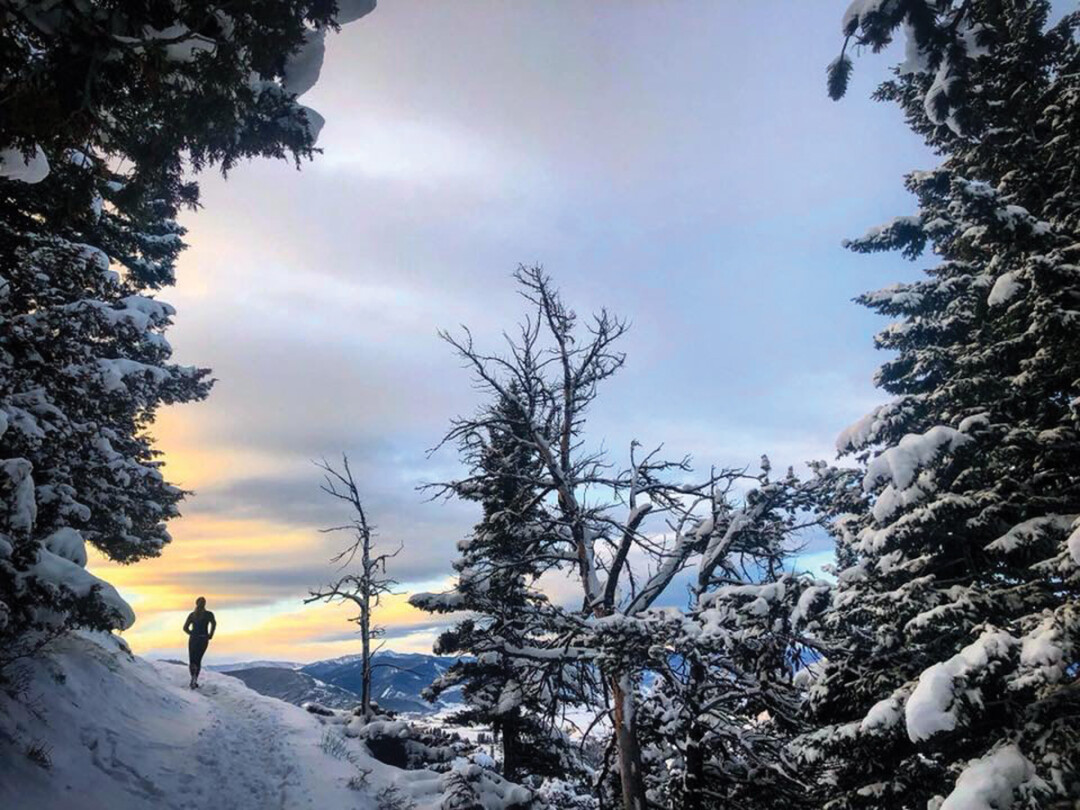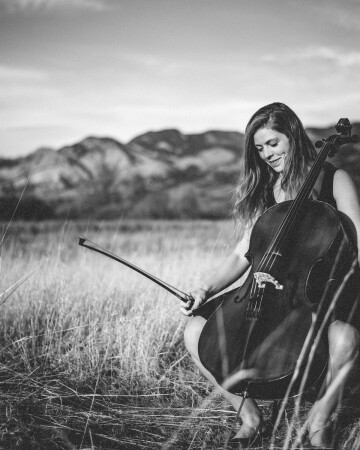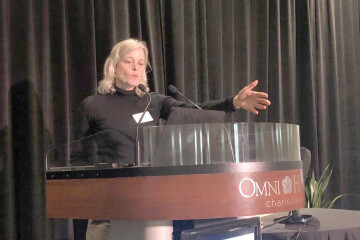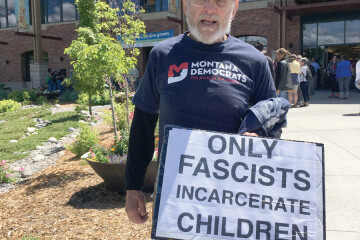Bozeman’s Dancing Deer: Else Trygstad-Burke
I run on a semi-regular basis, maybe three kilometers, three times per week. Nothing like the distance junkies in Bozeman who invited me to go trail running for the first time. At this invitation for a twenty-kilometer run, my partner said, “I’ve invited some other runners with us today.”
If, at that moment, my self-consciousness wasn’t already elevated running alongside “regulars,” then it was all the more heightened at the thought of running with more strangers.
“Great…” I said nervously.
When the car of strangers arrived, out jumped two young, attractive women. The shorter looked like she ran really fast. The taller, looking also adept, was Else Trystad-Burke, approximately six feet tall, lithe, muscular with a long mane of hair, a big smile and freckles.
Now, let’s be clear, I was happy that I could keep up with the pack. I didn’t really want them to know that I was “green,” so I had to exert a little more effort than normal to keep up. I prided myself on making the entire distance without incident.

But I could tell this was REALLY not a big deal for the other runners. In particular, Else. She didn’t so much as run the trail like the rest of us. It seemed as though her stride resembled dancing or even, floating. Her steps seemed efficient and planned like a deer nimbly trotting through the brush.
It turned out that I was right to spot the dancing influences. Else has been dancing ballet since she could walk. She started in Portland, Oregon, and continued when she moved with her family to Bozeman at age seven. She stopped dance training in her mid-teens when, despite the encouragement of her teachers to the contrary, she felt that she did not have the conventional physique of a ballerina.
This directed her efforts to music. She had also, at that time, been in her fifth year of cello studies with Dr. Ilse Mari Lee, who is now Dean of the Honors College at Montana State University.
Else pursued cello until, during her first year at Music School, she developed tendonitis, which forced her to take a year’s respite from her instrument.
Generally, one can only imagine how painful it must feel to have one’s dreams dashed by injury. Highly competitive careers such as music and sports demand strong desires for accomplishment. Injury forces some people to give up and choose a new path. But for others, injury gives them new perspective on how to use their craft differently.
Despite tendonitis, Else hung on to cello, yet also took an opportunity to pursue other disciplines.
At MSU Honors College, she studied history and art history all while teaching cello. Learning something else created a new-found drive to play her instrument. Following her recovery from tendonitis, she returned to regular cello performance and eventually accepted positions in the symphony and opera orchestra.
After University, all the while performing and teaching, Elsa was used to keeping her proverbial “fingers” in many different “pies.” Another one of those pies was an opportunity at arts development.
Her sister, Genevieve Trygstad-Burke and Erin Levy, founded an innovative and edgy dance company called Raison D’être Dance Project. Their purpose is to provide communities with a unique view of movement and inspire love and cultivation of dance and music. Motivated by this mission statement, Else initiated their fundraising efforts.
Along those fundraising lines, another obvious step for Else was to work in marketing and outreach for the Intermountain Opera Bozeman, an orchestra for which she was already playing.
To this day, she finds a lot of satisfaction in arts development. She says that approaching other people about giving money to the arts is scary and frightening; that she would stop if she did not totally believe in the purpose of the organization and did not feel completely exhilarated by what they were doing.
Else feels that this frightening feeling parallels the difficulties in her running practice. She says that to support good emotional and mental stability in her work she needs to be strong in her mind. That strength comes from the mental fortitude of long-distance running. Her coaches have instilled in her a balanced mental practice of toughness tempered with self-directed kindness.
Often times she wants to give up; in her career, and in her running. But, giving up is not an option. For example, she remarks moments when in the middle of the wilderness with no cell service, the only choice she has is to keep running just to return to safety.
Those parallels between running and the arts are clear in principle, but unnerving and complicated in practice. As running informs her outlook she has learned to step deftly through those problems as though they were a game.
“Overall, trail running has taught me that how I think about things can have such a powerful physical impact. I really try to impart that to my cello students [for example]. If you come across an obstacle on your instrument and reform that in your mind as a puzzle instead of a roadblock, it makes practicing so much more fun.”
And, that is the impression I get from Else. She has fun. That, even given the obstacles in her past, she has chosen to embrace them and use them as learning tools to understand her place in the marvelous town of Bozeman, making the process… fun.
Else’s career trajectory offers great lessons.
Firstly, an artist (or any career choice for that matter) need not have a fixed identity as an interpreter of a set genre or discipline. Branch out for God’s sake! America rewards specialization so much so that the highest paid often have limited general knowledge.
Secondly, the grateful artist should understand the source of arts funding necessary for performances. It’s important to put in the 10,000 hours and hone your craft, but the performance opportunities would not exist without generous donation from individuals and corporations who value that craft. Artists should always be aware of this and do what they can to help.
Finally, the eclectic portfolio increasingly seems to be the norm for many different careers, but especially the arts. Else’s strategy for employment is at the least admirable. Many in the arts maintain jobs in other fields simply to have the “privilege” of performing.
According to the US Department of Labor Statistics, the number of people holding down multiple jobs is currently around 5% of the population. A big improvement from years past. Although that figure is for the general population of the US, it is higher in the arts, especially when it comes to regional organizations where (also according the Department of Labor) artists like musicians and dancers earn, on average, around $20 per hour.
A society that can better sustain its artists has a great advantage. Not only does it indicate that it can put up the dough and that it values the contributions of its artists, but it means that its artists can dedicate themselves exclusively to their craft.
High quality creates greater demand. Better artists, better art.
In Montana, we don’t have large organizations like The Metropolitan Opera or The National Gallery to sustain our artists. Regional artists supplements their income through teaching their craft to others, either privately or in a university setting, or through extra non-related work.
A positive attitude and eclectic pursuits have enabled Else to support a workable career exclusively in the arts. The delightfully peculiar way she has done it broadens her connection to Montanans.
People in town know who I’m talking about when I mention Else. Even the editor of this magazine knew her by name. Being open to opportunity and working in areas where she finds traction, her influence has benefited the community at large.
Else makes Bozeman a better place.
I asked Else about her upcoming performance and development projects.
She enthusiastically told me about Intermountain Opera’s October 2019 production of “27” by the Los Angeles-based composer, Ricky Ian Gordon. It treats the period of innovation in Gertrude Stein’s Paris studio and her relationship with Alice Toklas. Else savors the social justice component and the impressive group of people surrounding Stein during life in Paris.
Following this will be Baroque Music Montana’s performance of the Complete Brandenburg Concertos of J.S. Bach on November 16th, 2019. This exciting group, founded by violinist Carrie Krause (also an accomplished trail runner), features some of the best baroque musicians in the country. This will be the first time that Bach’s Brandenburg Concertos will be performed in Bozeman!
Also, in November, Bozeman’s innovative Raison D’être Dance Project will introduce “Rachmaninoff and Plutonia” with a sneak preview on November 16th at 4 p.m. at the Emerson’s Crawford Theater.
And, by the way, Else still dances ballet.
Thomas Glenn is an internationally acclaimed operatic tenor, Grammy Award Winner and freelance writer. He has sung with Intermountain Opera Bozeman in three of their past productions: Così fan tutte, Don Pasquale and Falstaff.
Photos by Blair Speed.



